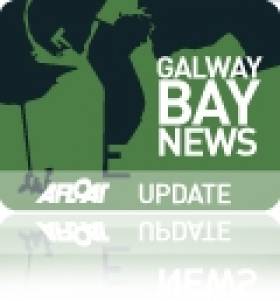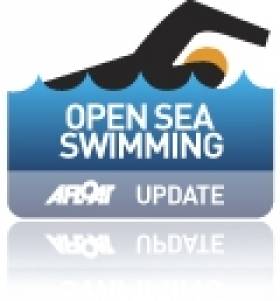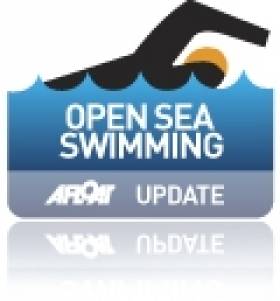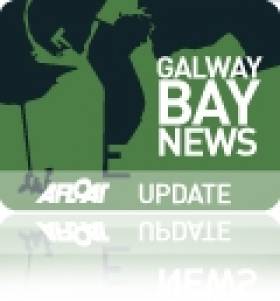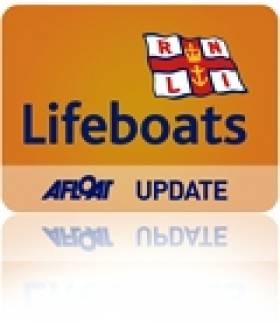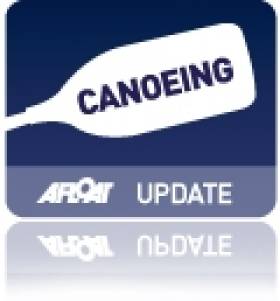Displaying items by tag: Charity
Record-Setting SCUBA Diver is Ireland's First Professor of Midwifery
#DIVING - A Guinness World Record holding SCUBA diver has been appointed as Ireland's first ever Professor of Midwifery, the Galway Advertiser reports.
Prof Declan Devine, who is a leading seararcher and scholar in the field, will take up the role at NUI Galway's School of Nursing and Midwifery.
His expertise in childcare goes in tandem with his efforts to raise funds for the care of children with serious illnesses. He serves as director of West of Ireland children's cancer charity Hand in Hand.
Prof Devine has also combined his charitable activities with his passion for SCUBA diving, raising more than €35,000 in 2009 when he set the Guinness World Record for the longest open saltwater SCUBA dive in cold water.
The Galway Advertiser has more on the story HERE.
Shooter to Give Talk on Record-Setting Kayak Voyage Round Ireland
Elaine 'Shooter' Alexander will be giving a public talk on her remarkable circumnavigation of Ireland by kayak in Co Fermanagh next month.
During the summer Afloat.ie tracked Shooter's progress as she battled against the elements to complete the round-Ireland route in 71 days - becoming the first woman to circumnavigate the island solo by kayak.
The Ulster woman had been training for over a year for the challenge, which was intended to raise funds for the Fermanagh-based SHARE, a charity that brings together disabled and non-disabled people in arts and outdoor-based activities.
On Saturday 22 October Shooter will be at the SHARE Centre in Lisnaskea to give a presentation and audio/visual show about her journey, followed by a question and answer session.
There will also be a meet-and-greet opportunity, as well as a chance to see the gear that she used on her epic voyage.
Tickets are priced at £7 for adults, £4 for children/OAPs/students/concessions, and £15 for a family ticket (2 adults/2 children).
Special B&B rates of £15 for adults and £10 for children are also available for those who want to make a night of it.
For all booking enquiries please contact [email protected].
Triathletes Cross the Line at First Galway Ironman
RTÉ presenters Kathryn Thomas and Gráinne Seoige were among the 2,000 competitors who crossed the finish line at the Ironman triathlon in Galway yesterday.
According to the Irish Independent, the duo took part in the relay competition in aid of Irish Autism Action.
Meanwhile, fellow celebrity and Boyzone star Keith Duffy took on the challenge of completing the entire 70.3-mile course, finishing with a time of 5 hours 40 minutes.
The first Ironman event to be held in Galway comprised a swim across Galway Bay, a 90km cycle across Connemara and a 21km run through the streets of the City of the Tribes.
However adverse conditions at the start of the race saw the swimming stage reduced from 1.9km to 1km for safety reasons.
Among the elite competitors, first home was Switzerland's Mike Aigroz, with a time of 3:50:12. Best among the Irish men was Cork's Owen Cummins at 4:01:26.
Britain's Lucy Gossage came first in the women's section at 4:02:09, while Irish national record holder Joyce Wolfe set a time of 5 hours 44 seconds.
Correction: The original version of this story had the distance of the swimming stage as reduced from 1.9km to 700m, but the official Ironman Galway website confirms the swim distance as 1km.
No Bare Chest but Ronan Keating Completes Charity Swim
Five brave celebrities have completed a once in a lifetime challenge, arriving at the north pier at Wicklow Bay, Ireland yesterday morning at 08:18am, after a 35 hours and 18 minutes, 56 mile swimming relay across the Irish Sea to raise £1 million for Cancer Research UK.
Afloat's photo though is taken off Sandycove for a 'final' swim ashore at The Forty Foot (for media/PR purposes) though he swim team actually completed the swim beforehead in Wicklow Harbour. Taxis awaited the celebrities at Sandycove and subsequently the support vessels berthed at the East Pier in Dun Laoghaire.
Boy-band legend, Ronan Keating, gadget guru Jason Bradbury, 'fearless' TV presenter Jenny Frost, former British butterfly swimmer and Olympic medallist Steve Parry, and plucky Pamela Stephenson, made up the team of ten, including two members of the public, who swam across the Irish Sea in Cancer Research UK's first celebrity led challenge The Samsung Galaxy S II Swim.
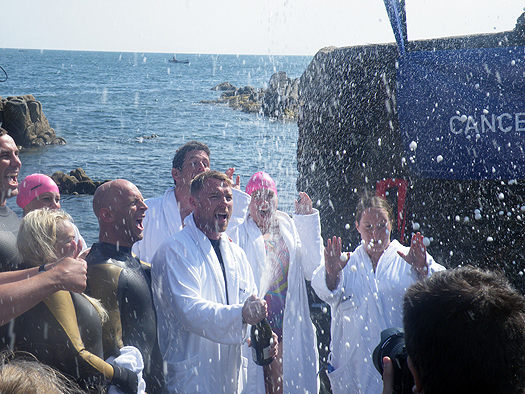
Ronan Keating Celebrates in Sandycove yesterday. Photo: Jehan Ashmore
Captain of The Samsung Galaxy S II Swim, Ronan Keating, said: "I can't believe we finally made it to Ireland. Fifty six miles later it's an incredible achievement and I'm so proud of the team. You can still sponsor the team at www.virginmoneygiving.com/team/theswim."
Steve Parry, first to touch land this morning, said: "I've been swimming for the majority of my life and The Swim has been the biggest challenge of my life. It's been a fantastic team of open water swimmers and adventurous celebrities who have come together for an amazing challenge to raise £1million for Cancer Research UK's life-saving work."
Two members of the public swam with the celebrity team across the Irish Sea. The two lucky swimmers were picked from a host of people who signed themselves up for swimming trials in Brighton in August. Olly White (33 year old teacher from Devon) and Nikki Fraser (18 year old student from Yorkshire), are both keen open water swimmers and were invaluable members of The Swim team.
After touching down at the north pier in Wicklow Bay the team are now back on the boat and making their way to the Forty Foot in Dunleary where they will get back in the water and swim to land for a second time this morning to greet their friends and family who are waiting anxiously for them on the shore.
For more information on The Swim or to sponsor the team, please visit www.the-swim.co.uk
Ronan Keating Battling the Waves in Irish Sea Charity Swim
Singer Ronan Keating set off with a group of celebrities and 'super swimmers' on a charity crossing of the Irish Sea from Holyhead to Dublin late last night.
The former Boyzone star is joined by TV presenters Jenny Frost and Jason Bradbury, writer and psychologist Pamela Stephenson and British Olympic swimmer Steve Parry.
Keating and his group - who all have personal or family experience of cancer - hope to raise £1 million (€1.13 million) for Cancer Research UK.
Each celeb will take turns swimming for one hour until the group reaches landfall in Dublin - a journey that's expected to take 40 hours and could cover as much as 70 nautical miles due to tidal variations.
The Irish Times has more on the story HERE.
Athlone Man to Swim Galway Bay for Charity
The Westmeath Independent reports that Athlone man Jim O'Connor is preparing to swim 13km across Galway Bay for charity.
Jim will join 25 other brave swimmers on Sunday 20 August in the Frances Thornton Memorial Galway Bay Swim in aid of Cancer Care West, which is now in its sixth year.
The swim route runs from Auginish in Clare to the Blackrock Diving Tower in Salthill - and Jim is already swimming up to 30km each week at his local pool to ready himself for the challenge.
He is also halfway towards his fundraising target of €1,000 - to which readers can contribute at MyCharity.ie.
The Westmeath Independent has more on the story HERE.
RNLI Appeals for Donations to Ensure Its Survival
The Royal National Lifeboat Institution (RNLI) has issued an appeal for funds to ensure its survival.
The volunteer crews from the RNLI go to sea hundreds of times a year to help those in danger off the Irish coast, often in terrible conditions.
One recent rescue reported on Afloat.ie saw the Fenit inshore lifeboat launched to go to the aid of a fishing vessel in Tralee Bay having difficulties in thick fog.
The lifeboat successfully found the disorientated oyster fishing boat, with three crew members aboard, then discovers two further oyster fishing boats also struggling in the fog. All three were escorted safely back into the harbour.
The last two years were the busiest in the RNLI's history, the organiation says, but income is in danger of not keeping pace.
Last year volunteer-crewed lifeboats rescued 813 people from the seas around the Irish coastline, They are ready to go to sea whatever the conditions, and are on call 24 hours a day. But they can't do this without your help.
The RNLI is a charity and relies on donations to keep the lifeboat service running. If you can give anything, please forward it to the RNLI Fundraising Appeal, RNLI Ireland, Dept AA1280, PO Box 4214, Freepost, Dublin 2.
Shooter Nears the Finish Line in Solo Kayak Challenge
Elaine 'Shooter' Alexander is set for hero’s welcome this week as she becomes the first woman from Northern Ireland to circumnavigate the island of Ireland by kayak.
The solo paddler is expected to reach the finish line at County Antrim Yacht Club on Wednesday after her 70-plus-day test of endurance.
Shooter began her epic 1,000-mile voyage on 3 May, facing a tough challenge navigating a coastline of cliffs and headlands, strong tides and brutal weather. She has been storm-bound for a total of 21 days, often only with a small tent for shelter.
When asked what home comfort she was most looking forward to, she simply replied: "A proper toilet and some clean clothes."
Shooter embarked on the challenge to raise funds for SHARE, a charity providing outdoor activity programmes that promote the inclusion of disabled and non-disabled people.
“I expected and had trained for the physical challenge but I don’t think you can ever prepare mentally," she commented.
"It has been a real struggle coping with the repetition of paddling, getting changed into wet clothes and packing up a wet tent every day. Especially on the windy days it has been hard just to push on that extra few miles each day.”
But connecting with fans and supporters through social media made a big difference.
“The Facebook page has really been a lifeline," she said. "There is nothing more motivating than coming off the water after a tough day to read so many supportive and funny comments from well wishers."
See below for a map showing Shooter's live position as she edges closer to the finish line.
Charity Fun Sailing Race at Royal St George
The Royal St George Yacht Club will host its first charity fun sailing race in aid of Our Lady’s Children’s Hospital Crumlin on Friday 22 July.
The race is open to all with a suggested entry feel of €5 for every crew member. Following the action the RSGYC will host an aprés race party for all participants and friends.
And since fun is the aim of the day, there is also a fancy dress option with a prize for the best dressed person!
Entries can be made online at the RSGYC website or alternatively by e-mail to [email protected].
Our Lady's Children’s Hospital Crumlin is an acute paediatric teaching hospital and is Ireland's largest paediatric hospital, being responsible for the provision of the majority of tertiary care services for children and medical research for childhood illnesses in Ireland.
For more than 50 years, Our Lady’s Children’s Hospital have relied on fund raising to help ensure that critically ill and injured children have access to the highest quality care. Contributions are invested in outstanding paediatric care and research to help the nation's sick children and continue to support efforts to ensure healthier children and happier lives.
Shooter Hits Tramore Three Weeks Into Kayak Challenge
Elaine 'Shooter' Alexander has now reached Tramore on the south-east coast in her effort to circumavigate the island of Ireland by kayak.
Now three weeks into her solo voyage to raise funds for Share, which works for the inclusion of disabled people in water-based and other activities, Shooter is edging ever closer to the half-way point of her 1,000-mile route.
See below for a map of Shooter's current position.





























